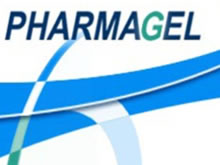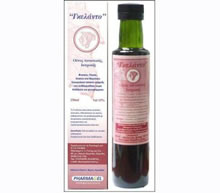
Λεξικό .. Anticonvulsant hypersensitivity syndrome (AHS)
The antiepileptic drug hypersensitivity syndrome (AHS) is an adverse drug reaction associated with the aromatic antiepileptic drugs (AEDs) phenytoin (PHT), carbamazepine (CBZ), phenobarbital (PB), and primidone. The syndrome is defined by the triad of fever, skin rash, and internal organ involvement. It can also be caused by other drugs, such as sulfonamides, dapsone, minocycline, terbinafine, azathioprine, and allopurinol. Diagnosis of AHS may be difficult because of the variety of clinical and laboratory abnormalities and manifestations and because the syndrome may mimic infectious, neoplastic, or collagen vascular disorders. The incidence is approximately 1 in 3,000 exposures. AHS starts with fever, rash, and lymphadenopathy, within the first 2-8 weeks after initiation of therapy. Internal manifestations include, among others, agranulocytosis, hepatitis, nephritis, and myostitis. AHS is associated with a relative excess of reactive oxidative metabolites of the AED. Insufficient detoxification may lead to cell death or contribute to the formation of antigen that triggers an immune reaction. Crossreactivity among PHT, CBZ, and PB is as high as 70-80% [1].
Anticonvulsant hypersensitivity syndrome (AHS), also known by the other names drug rash (reaction) with eosinophilia and systemic symptoms (DRESS) and drug-induced hypersensitivity syndrome (DIHS), is a rare and potentially fatal reaction that occurs in susceptible patients after exposure to certain drugs, including aromatic anticonvulsants. Because of its ill-defined clinical picture and resemblance to other diseases, the diagnosis of AHS is often difficult and requires a safe and reliable diagnostic test. The skin patch test has been proven to be very useful for prediction and diagnosis of some types of hypersensitivity reactions such as delayed drug eruptions to beta-lactam antibacterials. However, the diagnostic value of patch testing for AHS is yet to be determined and its negative predictive values (NPVs) and positive predictive values (PPVs) are still unknown.
This systematic review attempts to evaluate the usefulness of patch tests in the diagnosis of AHS and to examine different technical aspects of patch testing that may contribute to its performance. We included studies in which aromatic anticonvulsant drugs are the likely causes of the hypersensitivity reaction. Analysis of original publications from 1950 to August 2008 and cited in PubMed, MEDLINE and EMBASE has revealed contradictory findings, possibly due mainly to the use of unstandardized methods.
Numerous factors have been suggested to affect the final result of the test, including the following: type of drug tested; concentration of drug and vehicle used; timing of the test after exposure; and the clinical picture of the reaction. The PPV of the test in optimal conditions was as high as 80-90% depending on the drug tested. On the other hand, this value is around 10-20% in many other published studies. Although patch testing may be a useful diagnostic test for AHS, accurate determination of its sensitivity and specificity is yet to be achievable due to the lack of a gold standard test against which the performance of patch testing can be measured. Its PPV appears to be higher than its NPV, a matter that necessitates the use of other confirmatory tests in case of negative patch tests (e.g. careful systemic rechallenge). The benefit of testing appears to be maximal with certain drugs (i.e. carbamazepine and phenytoin) and for specific clinical manifestations (strong reactions). It should be performed 2-6 months after recovery from the date of the ADR for best results, with adequate vehicle control[1].
Clinical presentations of adverse drug reactions are highly variable and must therefore be suspected in any patient who develops any unusual manifestation after taking antiepileptic drugs. Early recognition of AHS and withholding and/or changing the medication are necessary to prevent potentially fatal outcomes.
References
1. Schlienger RG, Shear NH. Antiepileptic drug hypersensitivity syndrome. Epilepsia. 1998;39 Suppl 7:S3-7.
2. Elzagallaai AA, Knowles SR, Rieder MJ, Bend JR, Shear NH, Koren G. Patch testing for the diagnosis of anticonvulsant hypersensitivity syndrome: a systematic review. Drug Saf. 2009;32(5):391-408
3. Armin S, Chavoshzadeh Z, Mohkam M, Rezaei N. Antiepileptic hypersensitivity and DRESS syndrome due to phenytoin in two pediatric cases. Turk J Pediatr. 2009 Jan-Feb;51(1):76-7.
Γκέλης Ν.Δ. - Λεξικό Αλλεργίας - Εκδόσεις ΒΕΛΛΕΡOΦΟΝΤΗΣ - Κόρινθος 2013
Gelis Ν.D. - Dictionary of Allergies - VELLEROFONTIS Publications - Corinth 2013




